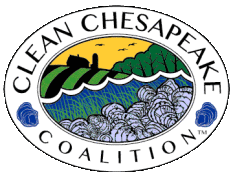Baltimore Sun – By Christine Condon – Nov 21 2022
The Environmental Protection Agency announced Monday that it has rejected Pennsylvania’s latest plan for reducing its pollution of the Chesapeake Bay, finding it falls well short of the state’s commitment.
The agency forced Pennsylvania to resubmit its plan last year, warning that its first try was insufficient. But the state’s newest attempt also missed the mark, the EPA said, failing to account for 9.3 million pounds of nitrogen reductions that the state is supposed to achieve under a 2025 deadline.
As a result, the federal agency plans to continue with a heightened pace of environmental inspections and penalties originally announced in April, said Adam Ortiz, Administrator for the EPA’s Region 3, which includes the bay states.
“Part of our stance as a region in the Biden Administration is this policy of tough love,” Ortiz said.
The “love” includes infrastructure dollars from the federal government, including from the American Rescue Plan, Ortiz noted.
Meanwhile, the 2025 cleanup plan for the bay appears unlikely to reach fruition. Last month, the Chesapeake Bay Program’s Executive Council admitted as much, tasking a committee with evaluating a new timeline.
According to the EPA’s latest analysis, only West Virginia and Washington, D.C., are on track to meet their 2025 commitments. The remaining states are running behind, though to varying degrees.
But the EPA has focused on Pennsylvania largely because of the volume of nutrient and sediment pollution it sends into the Chesapeake via the Susquehanna River, said Suzanne Trevena of the Chesapeake Bay Program’s water division. That’s due in part to the high concentration of farms in the state.
Agricultural runoff — from manure and other fertilizers applied to fields, for example — fills bay tributaries with excess nutrients. When they reach the bay, these nutrients spur algae blooms that steal oxygen needed to support marine life.
Pennsylvania already has completed upgrades to many wastewater treatment plants, another large source of nutrient pollution, so the remaining reductions need to come from sources like farms, Trevena said.
“Some states have the luxury of having more wastewater treatment plant upgrades coming. So they have that guaranteed regulated sector to rely on,” Trevena said.
Now that the EPA has determined Pennsylvania’s plan is once again deficient, the state could choose to amend it again, Trevena said.
In its latest submission, Pennsylvania pointed to plans to use $154 million of American Rescue Plan dollars to support a cost-sharing program for farmers, to provide financial incentives for best practices like protecting streams and rivers with forested buffers. But that wasn’t enough to close the gap.
In a statement, Deborah Klenotic, a spokesperson for the Pennsylvania Department of Environmental Protection said: “We know through both modeled and monitored progress that what we’re doing is working, and we’re committed to sustaining and increasing our efforts.”
In particular, the state agency plans to continue working with the U.S. Department of Agriculture’s Natural Resources Conservation Service to improve pollution reduction efforts, and is looking forward to the impact of the new cost-sharing program for farmers, Klenotic said.
“Historically, the issue has been policy and investment to help [farmers] out. A lot of these policies and investments have not hit the ground yet in Pennsylvania, so that may be some of the issue,” Ortiz said. “In particular the cost-share program is a significant help. Those are programs that Virginia and Maryland have had for more than a decade.”
According to the EPA’s analysis, Pennsylvania has made plans to achieve 72% of the promised nitrogen reductions, 99% of phosphorus reductions, and 93% of the sediment reductions.
Pennsylvania has long been maligned for its slow progress toward bay cleanup goals. In 2020, Maryland Attorney General Brian Frosh sued President Donald Trump’s EPA over its enforcement of the 2025 agreement, particularly for Pennsylvania and New York. That litigation remains pending.
Since the announcement that the 2025 bay cleanup plan isn’t likely to be completed, some bay advocates have called on the EPA to take a more aggressive stance against the states falling short.
The EPA could, for instance, withhold certain funding from those states. But Ortiz has said that doing so would be equivalent to “not giving food to the starving person.” The agency also could alter which state agency or nonprofit organization receives its funding, Ortiz said, with the goal of improving program outcomes.
“We can inject a little bit of competition among the state agencies, so that’s the way that we want to do it,” Ortiz said. “But really, we’re concerned with making progress, not making statements.”
Read original article here

